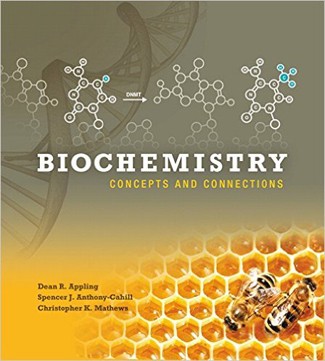Biochemistry Concepts and Connections 1st Edition Appling Anthony-Cahill Mathews Test Bank
Biochemistry Concepts and Connections 1st Edition Appling Anthony-Cahill Mathews Test Bank
$35.00
Description
978-0321839763
Biochemistry: Concepts and Connections (Appling et al.)
Chapter 3 The Energetics of Life
1) Which of the following statements is FALSE?
A) Organisms are open systems as they can exchange both energy and materials with their environments.
B) In an open system energy can be converted from one form into another.
C) Organisms are open systems as they can create energy from their environments.
D) Energy can be transferred between a system and the surroundings.
E) In biochemical processes, energy can neither be created or destroyed.
Answer: C
Objective: 3.1
Global LO: G7
2) Which of the following statements is FALSE?
A) Entropy is a measure of disorder.
B) The entropy of an isolated system will tend to increase to a maximum value.
C) Biological systems are highly ordered so entropy changes are not relevant.
D) Biological systems expend energy to overcome entropy.
E) The entropy of a biological system can decrease.
Answer: C
Objective: 3.2
Global LO: G2
3) A biochemical reaction will proceed in the direction as written if:
A) ?G = zero.
B) ?G > 0.
C) ?G < 0.
D) ?H > 0.
E) ?H < 0.
Answer: C
Objective: 3.2
Global LO: G2
4) Life is an irreversible process, such that it never comes to equilibrium.
Answer: TRUE
Objective: 3.2
Global LO: G2
5) The equilibrium constant of a reaction:
A) is not related to the change in free energy of the reaction.
B) is the same as the mass action ratio when the reaction is displaced from equilibrium.
C) can change if the concentration of reactants and products are changed.
D) is related to the change in free energy of the reaction.
E) cannot be used to determine whether a reaction will proceed in the direction as written under non-standard conditions.
Answer: D
Objective: 3.3
Global LO: G7
6) The change in enthalpy (?H) for the complete oxidation of a fatty acid is different depending on whether it occurs via a biochemical pathway or combustion to CO2 and H2O.
Answer: FALSE
Objective: 3.3
Global LO: G7
7) A reaction at its lowest energy state for the system and with equal rates in the forward and reverse directions is said to be at ________.
Answer: equilibrium
Objective: 3.4
Global LO: G7
8) A reaction at equilibrium can be driven in one direction or the other by changing the ________ of reactants or products.
Answer: concentration
Objective: 3.4
Global LO: G7
9) A thermodynamically unfavorable reaction can become favorable if the mass action ratio is ________ than the equilibrium mass action ratio.
Answer: less
Objective: 3.4
Global LO: G7
10) Calculate the equilibrium constant for the enzymatic hydrolysis of 0.1 M glucose-6-phosphate to glucose and inorganic phosphate given that 0.05% of the original glucose-6-phosphate remained after reaching equilibrium and the activity of water is unity.
Answer: 199.8
Objective: 3.4
Global LO: G4
11) The ?Go of a reaction:
A) will change if the temperature of the reaction is changed.
B) will change if the concentration of reactants and products are changed.
C) is not related to the equilibrium constant.
D) can be used to calculate whether a reaction is thermodynamically favorable under defined non-standard conditions.
E) can predict whether a reaction will be thermodynamically favorable under standard conditions.
Answer: D
Objective: 3.5
Global LO: G7
12) Calculate the ?G?’ for the reaction
fructose-6-phosphate ? glucose-6-phosphate
given the equilibrium constant is 1.97 and the physiological relevant temperature is 37?C.
Answer: -1.75kJ/mol
Objective: 3.5
Global LO: G4
13) A thermodynamically unfavorable reaction can become favorable when coupled to a highly endergonic reaction.
Answer: FALSE
Objective: 3.6
Global LO: G7
14) A reaction with a large negative free energy of hydrolysis can be coupled to the synthesis of ATP from ADP and Pi.
Answer: TRUE
Objective: 3.6
Global LO: G7
15) In a general redox reaction, the reductant becomes oxidized and the oxidant becomes reduced.
Answer: TRUE
Objective: 3.8
Global LO: G7
16) The standard reduction potential is a measure of the ability of a reductant to ________ an electron.
Answer: lose
Objective: 3.8
Global LO: G7



Reviews
There are no reviews yet.